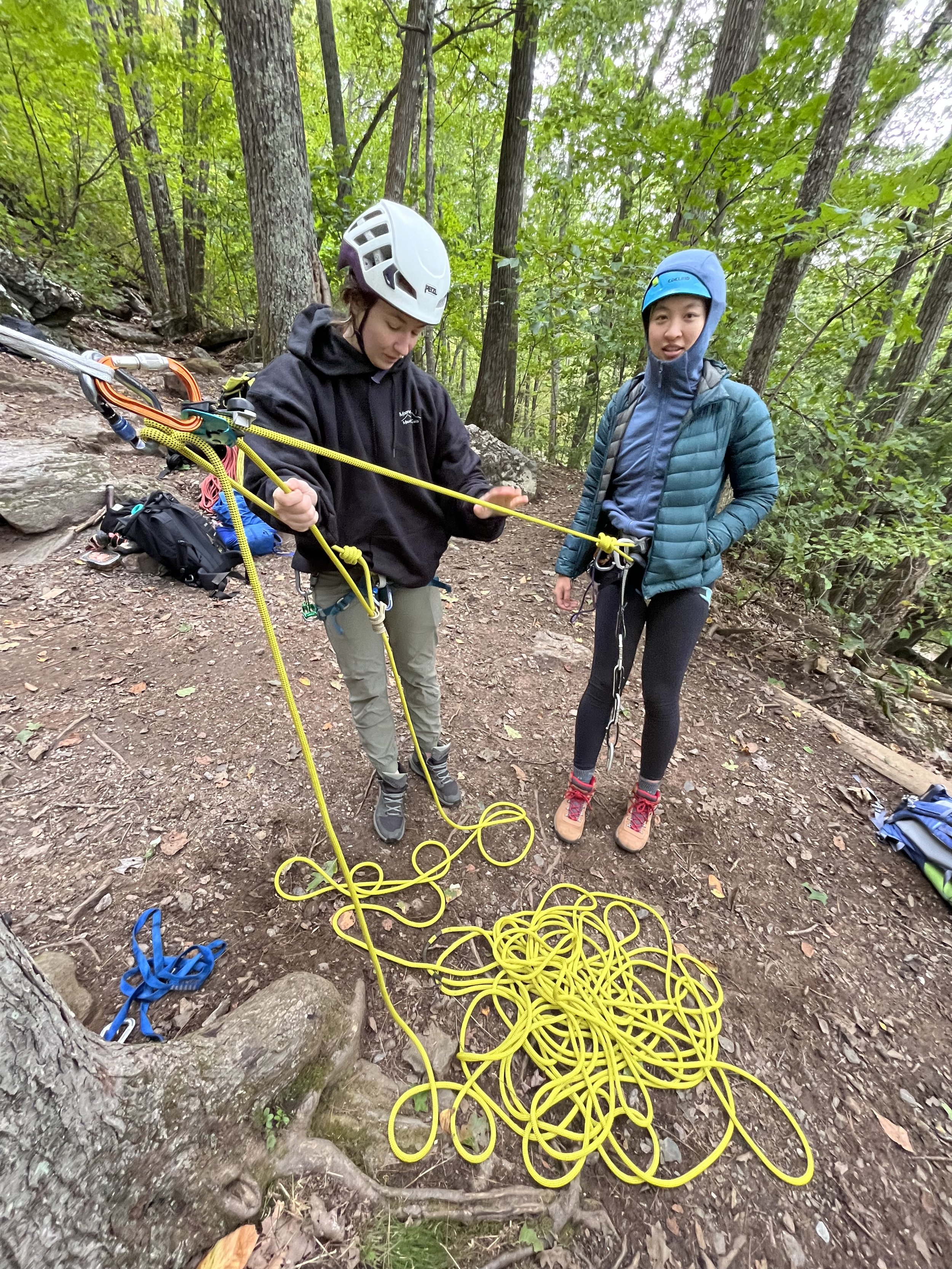Rumney Cragging Classic: Mastering Self-Rescue with the American Alpine Club
Nestled in the heart of the White Mountains of New Hampshire, Rumney has long been hailed as a rock climbing haven. Known for its stunning granite cliffs and world-class routes, Rumney attracts climbers from all corners of the globe. In 2023, the annual Rumney Cragging Classic reached new heights with the introduction of a self-rescue course sponsored by the American Alpine Club. Over the course of two unforgettable days, climbers of all levels converged to learn essential self-rescue techniques that could mean the difference between a safe descent and a dire situation. In this blog post, we'll take you through the highlights of this transformative experience, where climbing prowess met the art of self-rescue.
Day 1: Setting the Stage
The excitement was palpable as participants gathered at the base of the iconic cliffs at Rumney Rocks Climbing Area. Surrounded by lush forests and the promise of adventure, we embarked on a two-day journey to delve into the realm of self-rescue.
Morning Session: Knots, Hitches, and Anchors
Our self-rescue odyssey commenced with an in-depth review of essential knots and hitches. Participants practiced tying critical knots, including the figure-eight follow-through, bowline, and clove hitch. Proper knot tying is the foundation of safe climbing and self-rescue, and our instructors left no stone unturned in ensuring mastery.
After knots and hitches, we shifted our focus to anchor building—a vital skill for securing oneself and partners during self-rescue scenarios. With Rumney's world-class crags as our backdrop, participants learned to construct robust anchors using both natural features and climbing hardware.
Afternoon Session: Ascending and Descending Systems
As the sun cast long shadows across the cliffs, we delved into ascending and descending systems. These techniques are essential lifelines in the world of climbing, especially when faced with unforeseen challenges or the need to rescue a partner.
The session began with prusik knots, versatile tools for ascending ropes. Participants practiced ascending ropes efficiently and safely using prusiks and mechanical ascenders, mastering skills that could be lifesaving in real-world situations.
The day concluded with a focus on descending systems, including rappelling—a skill climbers rely on when facing unexpected obstacles. Participants learned to set up rappel devices, create redundant systems, and execute safe descents.
Day 2: Real-Life Scenarios and Mock Rescues
Morning Session: Anchor Cleaning and Belay Transitions
Day two started with anchor cleaning, a critical skill for retrieving gear safely and efficiently while minimizing the risk of dropping equipment. Participants learned the intricacies of this technique and gained confidence in their ability to navigate anchors.
Belay transitions took center stage next, emphasizing the importance of seamless transitions during multi-pitch climbs. These skills are vital for maintaining safety and efficiency during complex climbs and rescues.
Afternoon Session: Mock Rescues and Problem-Solving
The pinnacle of our self-rescue course was undoubtedly the afternoon session. Participants were divided into small groups, each faced with simulated climbing incidents, such as leader falls, stuck ropes, and injured climbers. These scenarios were designed to test their self-rescue skills and teamwork under pressure.
With experienced instructors observing closely, participants executed complex rescue techniques, including counter-balance rappels, tandem prusik ascents, and improvised hauling systems. It was a testament to their training and a thrilling display of problem-solving abilities.
Key Takeaways from the Rumney Cragging Classic Self-Rescue Course
Safety First: The course underscored the paramount importance of safety in climbing. Solid anchor building, efficient belay transitions, and self-rescue skills are crucial for ensuring the safety of oneself and climbing partners.
Problem-Solving Skills: Climbing is inherently unpredictable, often presenting unexpected challenges. The self-rescue course honed participants' ability to think on their feet, adapt to changing circumstances, and make sound decisions under pressure.
Effective Communication: Clear communication is the lifeblood of climbing partnerships. Participants learned the value of precise communication in ensuring that everyone is on the same page during rescue scenarios.
Self-Reliance: While climbing is often a communal endeavor, the ability to self-rescue is empowering. Climbers left Rumney with newfound confidence, knowing that they possess the skills needed to respond to emergencies and assist themselves and their partners in critical situations.
Teamwork and Trust: Climbing is inherently a community-driven sport. The self-rescue course reinforced the importance of teamwork, trust, and mutual support among climbers.
Respect for the Environment: Rumney's natural beauty served as a reminder of the need to protect and preserve our climbing areas. The course emphasized responsible climbing practices and environmental stewardship.
Conclusion: Empowering Climbers with Self-Rescue Skills
The American Alpine Club-sponsored self-rescue course at the Rumney Cragging Classic was a profound experience that transcended mere technical skills. It was a journey of self-discovery, confidence-building, and camaraderie. Climbers left Rumney not only with newfound knowledge but also with a deeper appreciation for the climbing community and the boundless potential that self-rescue skills unlock.
In climbing, we understand that every ascent carries inherent risks. By investing in education and preparedness, we empower ourselves to face these challenges head-on. The Rumney Cragging Classic self-rescue course was a testament to the power of preparation and knowledge—a reminder that with the right skills, climbers can conquer both the heights and the unforeseen obstacles that come their way.
As we bid farewell to the cliffs of Rumney, we carried with us not only the memories of our self-rescue journey but also a shared commitment to safe, responsible, and exhilarating climbing adventures.


